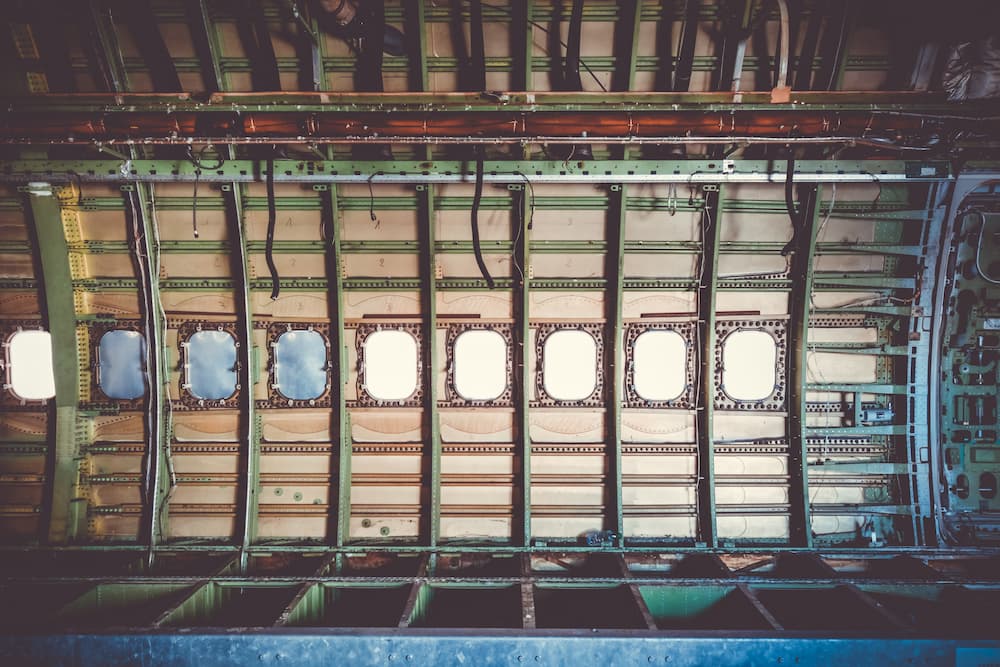Corrosion is a major cause of maintenance and operational costs for industries, especially in the mobility sector - exposed to harsh conditions. It can go from an aesthetic problem (rust spot, flaking paint) to more serious issues (compromised reliability, danger, breakage...). Engineers and manufacturers are constantly looking for new solutions to reduce the negative effects of corrosion in various industrial applications. Although there are several different types of coatings that provide some level of protection against rust and corrosion, one of the most commonly used methods is the use of corrosion inhibiting compounds (CICs).
Anti-corrosion methods and products
How to prevent corrosion
Whether it is for aeronautic applications, or in the railway or automotive sector, our clients have the same problem: How to protect surfaces from corrosion ?
Corrosion is a natural but avoidable chemical reaction. There exist solutions to protect your structures, materials, parts and assemblies effectively from corrosion: paint, water displacing solutions, CPC (Corrosion Preventive Compound), CIC,...
SOCOMORE has developed a wide range of anti corrosion protection to protect your surfaces during the life of your parts or structures. Among them, we find the corrosion inhibiting compounds (CIC).
Corrosion inhibitor action
A CIC can protect painted and unpainted surfaces. And can be applied on all types of metals:
- Steels
- Aluminium and its alloys
- Zinc
- Composites
- Painted surfaces
The advantage of a CIC (SOCOPAC type) over paint is that it can be easily removed with wipes pre-saturated with solvent. To remove paint, the surface must be sanded, or chemically removed with a paint stripper.
On some parts, the paint will help protect the surface from corrosion. But what about cavities or areas difficult to access?
You can use a CIC in aerosol spray or guns (bulk products) to spray in the inaccessible area. The CIC can also be applied with a brush. Both methods are also used outside the paint shop.
For example, for aeronautical, railway or automotive application : It can be used on the outside of the cabin (in cavities) or inside the cabin before covering the floor (carpet, plastic). It can also be applied on the bogies (for train applications). On aircraft, the CIC will be mainly useful in the fuselage (because of the great amount of condensation and liquid effluents produced by the onboard activity), also landing gear bays.


SOCOMORE’s high-performance CIC range
Corrosion inhibitor compound SOCOPAC 65h
SOCOPAC 65h is a long term, super penetrating, water displacing, corrosion inhibiting compound for the aerospace, railway and automotive industries.
It can be used with an ambient temperature without a specific need of relative humidity regulation. And it offers wide application possibilities:
- Spraying : see application video "how to use SOCOPAC 65H spray can?"
- Dipping
- Brushing
The drying time is from 1 hour (dry to handle) to 3 hours (fully dried).
One of the main advantages of this CIC is its thickness. Indeed, its film thickness is around 30-35µm wet (15-20 µm dry) : its dry film thickness is one of the lowest on the market.
However, it doesn't compromise on its effectiveness. The protection duration is up to 3 years indoors (SST: Aluminum: from 1500-2000 hours, SST: Steel from 750-1500 hours).
Finally, SOCOPAC 65h is qualified by the main OEM:
- AIRBUS
- SAFRAN (SAE, SHE)
- DASSAULT AVIATION
- ROLLS ROYCE
- Etc.
REACH Compliance |
Flash point |
VOCs Content |
Film resistance to temperature |
Product Type |
||
|
SOCOPAC 65H |
✔️ |
38°C |
440 g/L |
From -55°C to 100°C |
Long term corrosion protection |
|
Corrosion inhibitor compound SOCOPAC 50s
SOCOPAC 50S is a long-term, temporary, hydrophobic, corrosion-inhibiting coating. It is used to preserve the integrity of your materials, spare parts, and assemblies in harsh weather conditions (for aircraft, train, car,..).
It is a very efficient barrier to all of the agents that cause corrosion:
- Water
- Oxygen
- Acids
- Bases
- Salts from industrial emissions
- Tropical weather
It provides a long-lasting corrosion preventive barrier when applied to various materials, such as:
- aluminum and alloys
- steel
- light metals (titanium, magnesium)
- copper and galvanized steel
- zinc
- cadmium
It can be used without risk of corrosion on painted surfaces, composite materials, plastics, rubber, polycarbonate, and polycyclopentene (non-crazing).
In short, SOCOPAC 50S is designed to give the highest safety possible to both the user and the piece to be protected: It is free of harmful solvents, toluene, xylene or chlorinated compounds.
The corrosion-inhibiting coating SOCOPAC 50S has the following approvals:
- AIRBUS
- ALSTOM
- DASSAULT AVIATION
- EADS CASA
- FORD
- French Air Army (DGA)
- LEROY SOMER
- SAFRAN AIRCRAFT ENGINES
- SAFRAN HELICOPTER ENGINES
- SPANAIR
REACH Compliance |
Flash point |
VOCs Content |
Film resistance to temperature |
Product Type |
||
|
SOCOPAC 50s |
✔️ |
41°C |
501 g/L |
From -55°C to 150°C |
Long term corrosion protection |
|
How to remove Socomore corrosion inhibiting coating?
When you no longer need the CIC on your surface, you can easily remove it with our solutions. For SOCOPAC 65h, we recommend that you use the solvent cleaner SOCOSOLV A3482 (gel type) or the solvent cleaner DIESTONE DLS (liquid type).




















